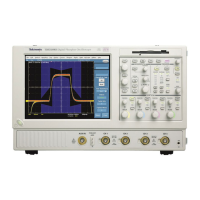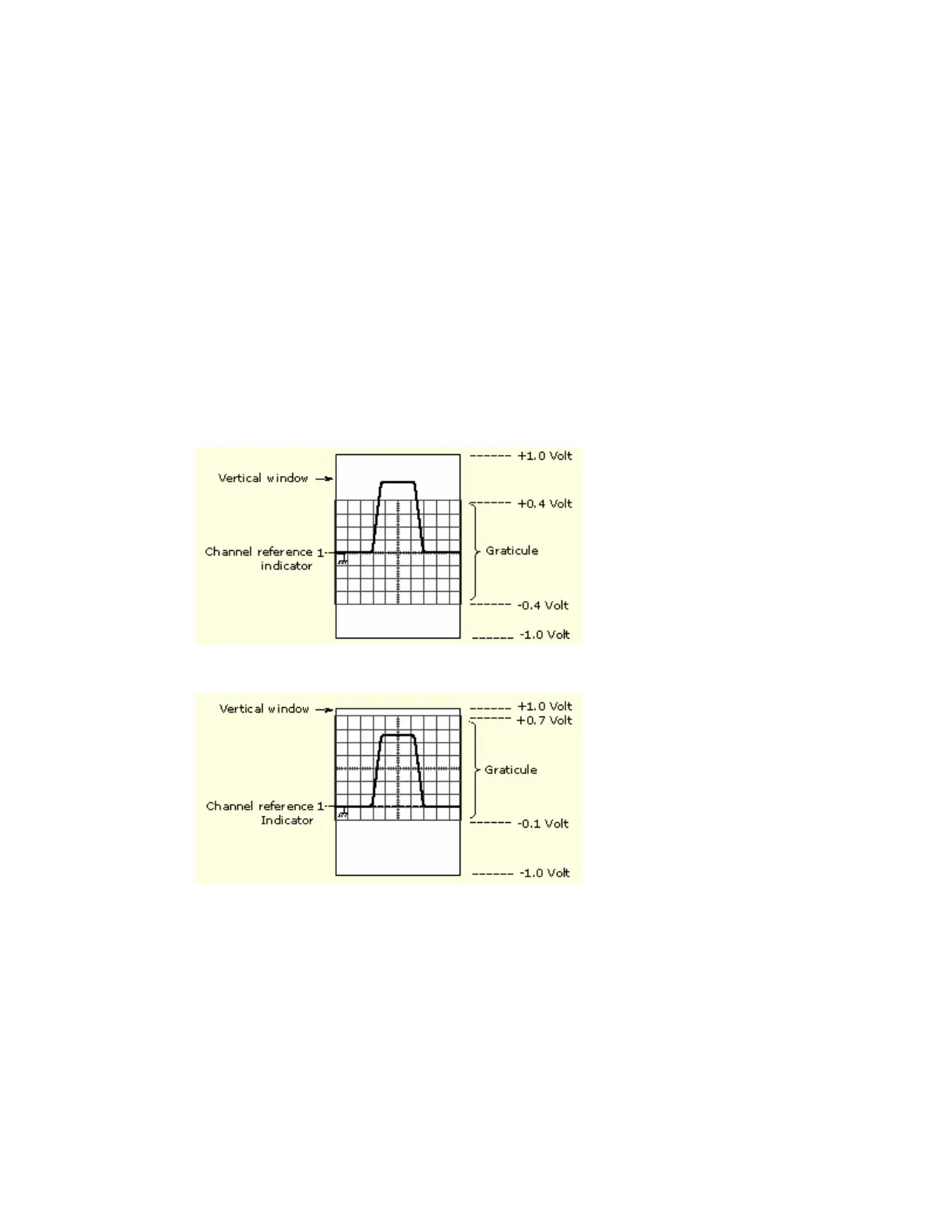230
Note
Amplitude-related automatic measurements (for example, peak-to-peak and RMS) will be accurate
for vertical windows like those shown in Figures A and B below because neither waveform is
clipped (that is, both waveforms are acquired). But if signal amplitude were to extend outside the
vertical acquisition window, the data acquired is clipped. Clipped data causes inaccurate results if
used in amplitude-related automatic measurements. Clipping also causes inaccurate amplitude
values in waveforms that are stored or exported for use in other programs.
If the scale of a math waveform is changed so that the math waveform is clipped, it will not affect
amplitude measurements on that math waveform.
The vertical position adjusts the display of the graticule relative to the vertical acquisition
window (position is a display control). Figure B shows how vertical position moves the
waveform graticule vertically in the acquisition window to place the acquired waveform in the
graticule display. That is all position does; it does not determine what data is acquired as do
vertical scale and offset.
Figure A
Figure B
As you vary vertical offset, the middle voltage level moves relative to zero. This moves the
vertical acquisition window up and down on the waveform. With input signals that are smaller
than the window, it appears the waveform moves in the window. Actually, a larger signal
shows what really happens: the offset moves the middle of the vertical acquisition window up
and down on the input signal. The following figure shows how offset moves the acquisition
window to control the portion of the waveform amplitude the window captures.
Applying a negative offset set moves the vertical range down relative to the DC level of the
input signal. Likewise, applying a positive offset moves the vertical range up. See the
following illustration.

